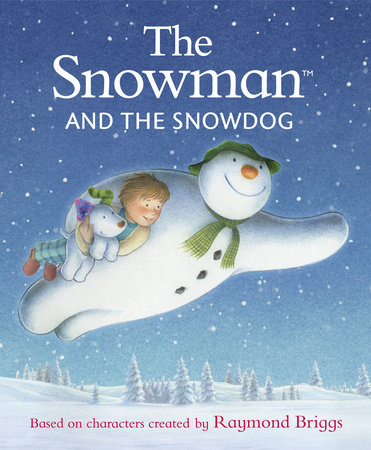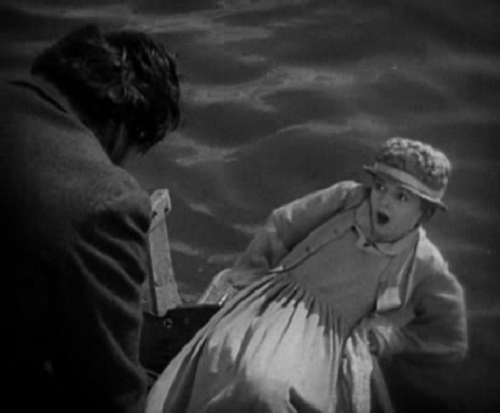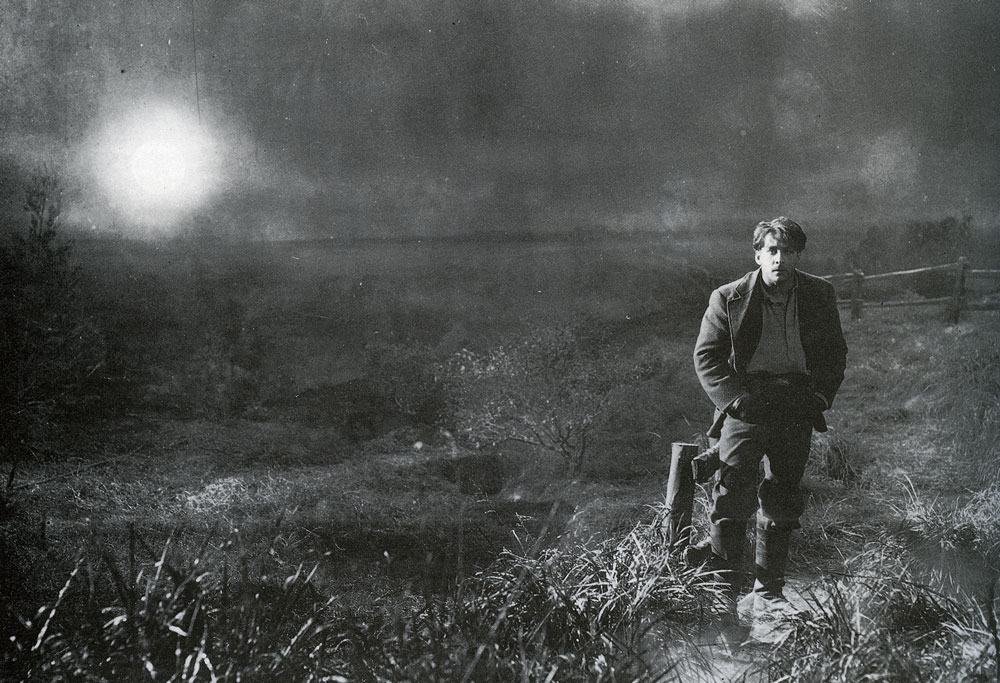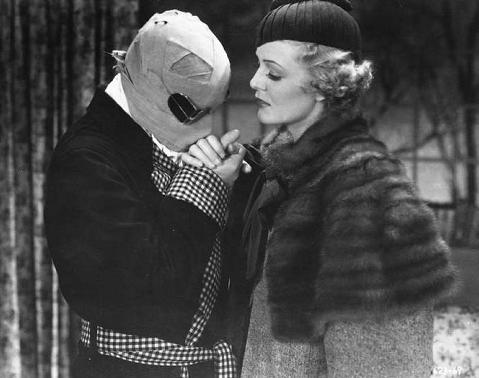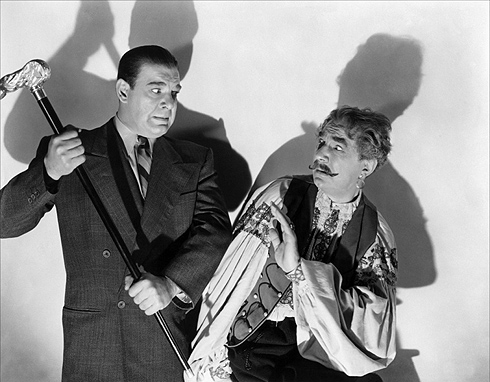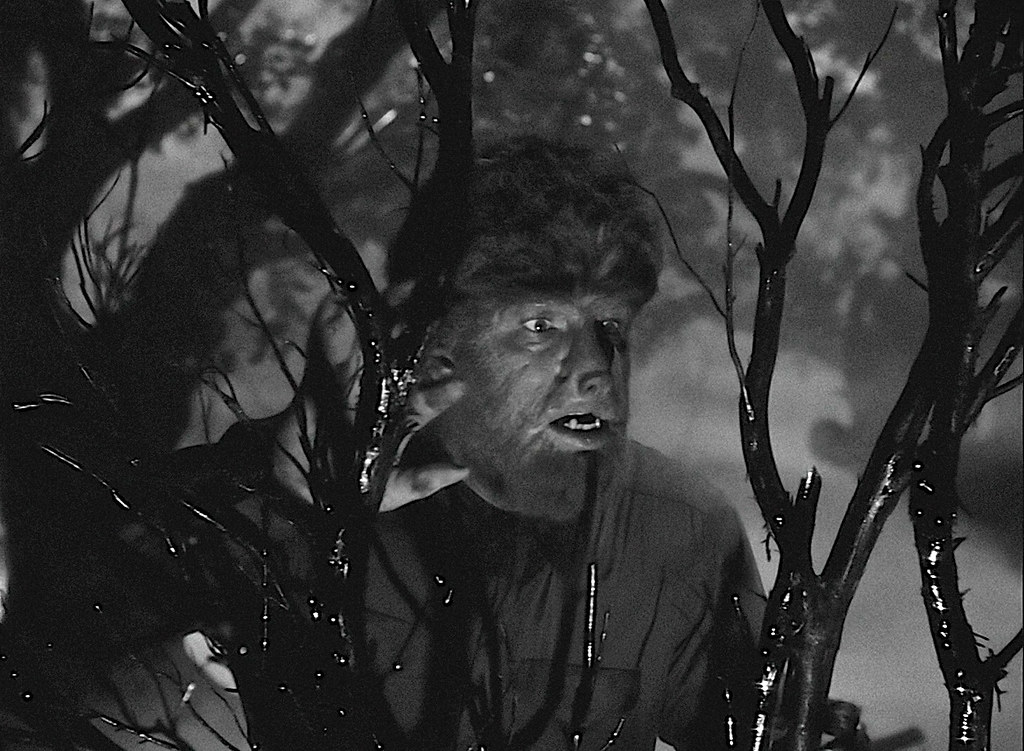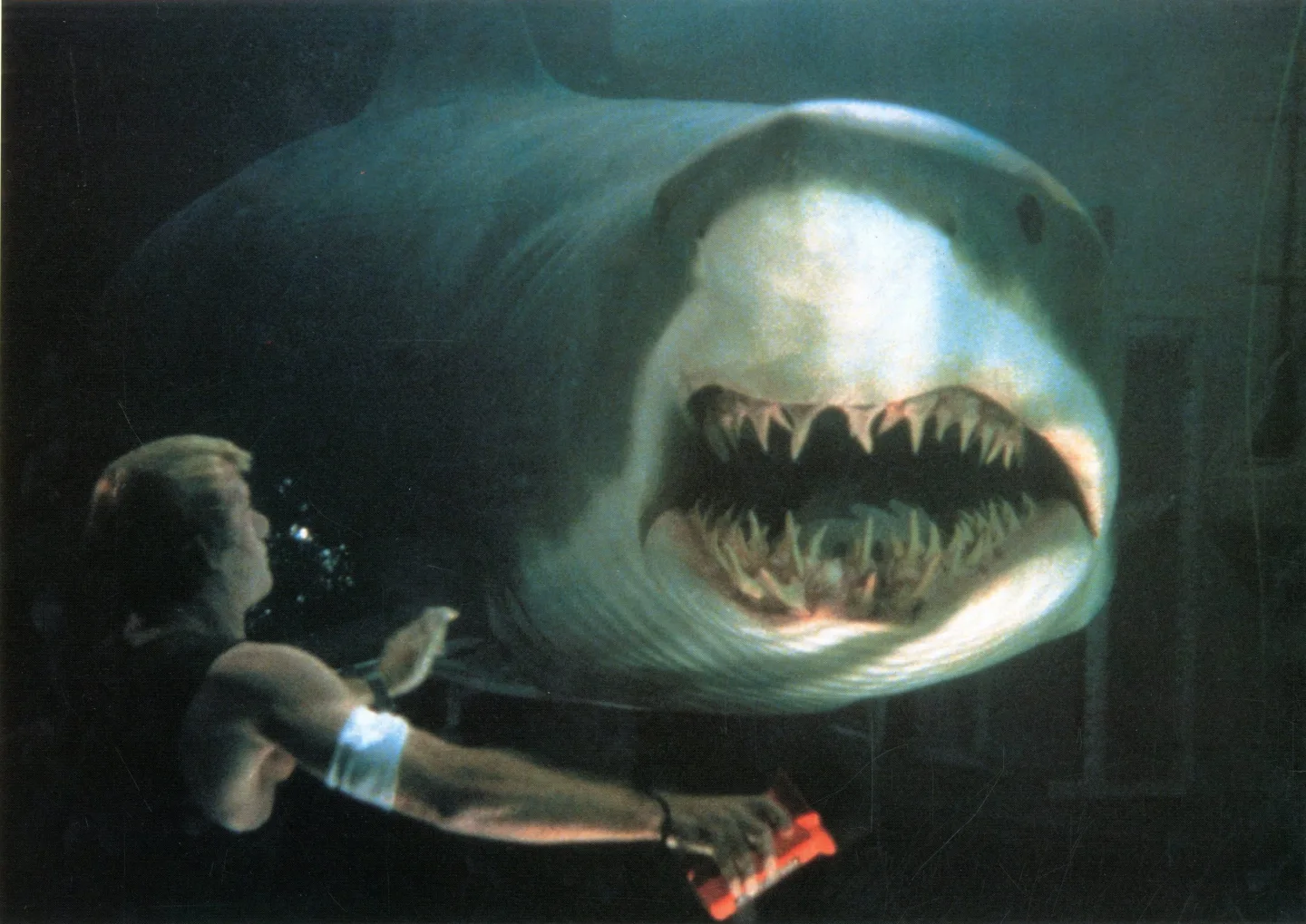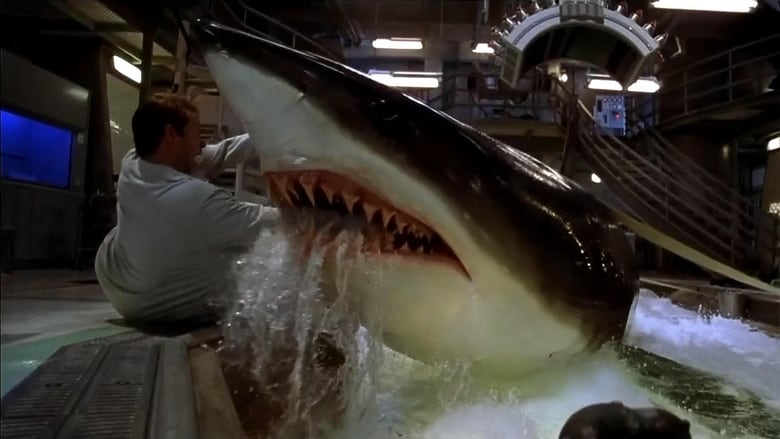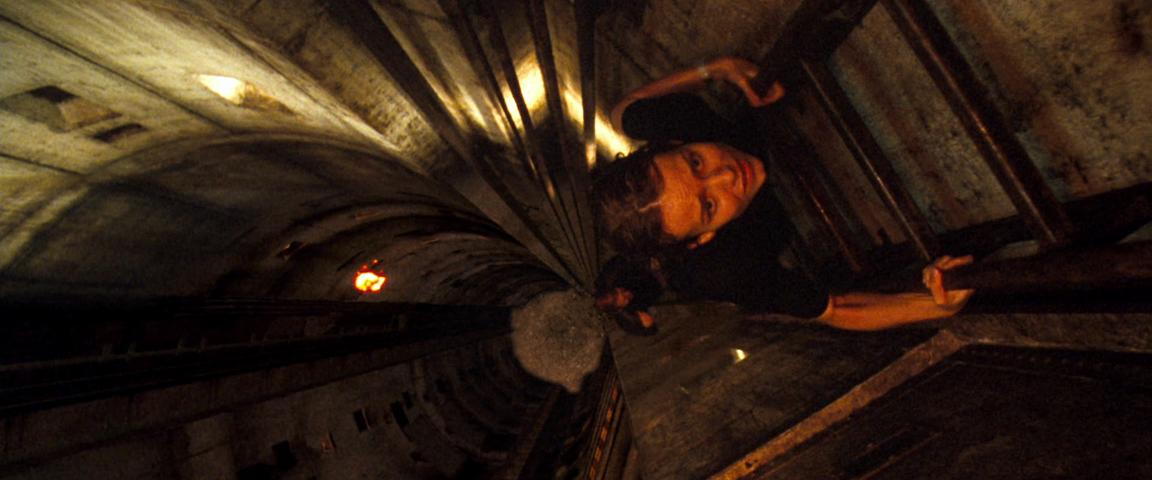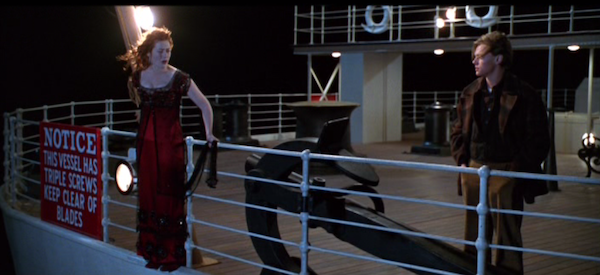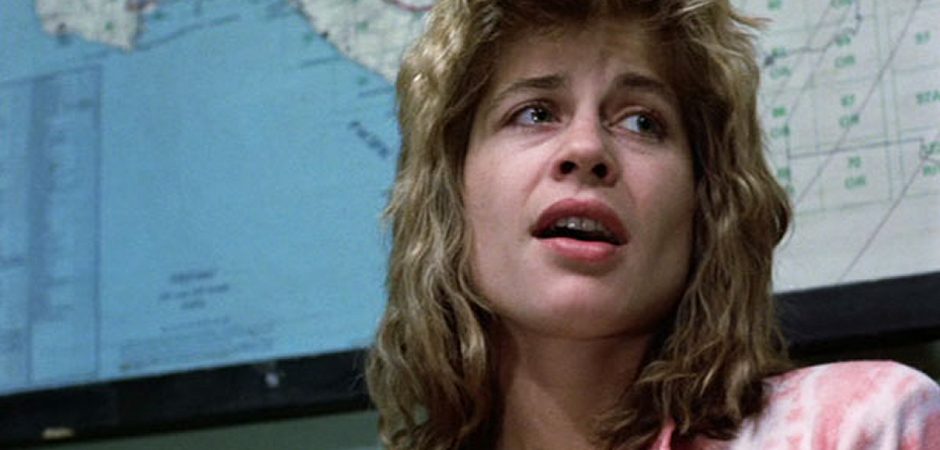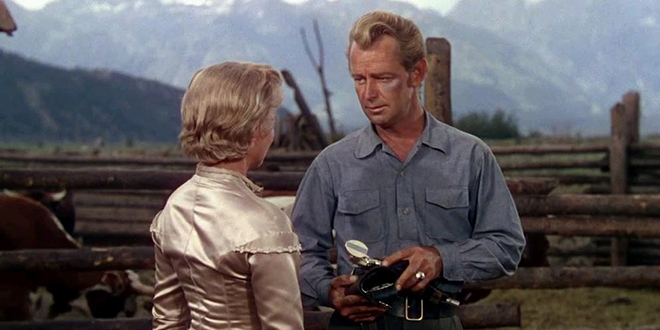It's July 4th, and it's time for me to review another sequel from Spielberg's unofficial Monster trilogy. I have completed all the infamous "JAWS" sequels, but I still have to finish reviewing the "Jurassic Park" sequels. I've covered all the sequels when they had "Park" in the title, now it's time to review the film that brought back the franchise since the damage of
the third installment...

I have yet to re-watch the film since the last time I saw it in the cinemas when it first came out. My first impression was finding the film fun and nothing else. I thought it was the best of the sequels; I just didn't find myself loving it compared to
the first film. Re-watching it now, did the film get any better, worse, or is it still okay? ON WITH THE REVIEW!
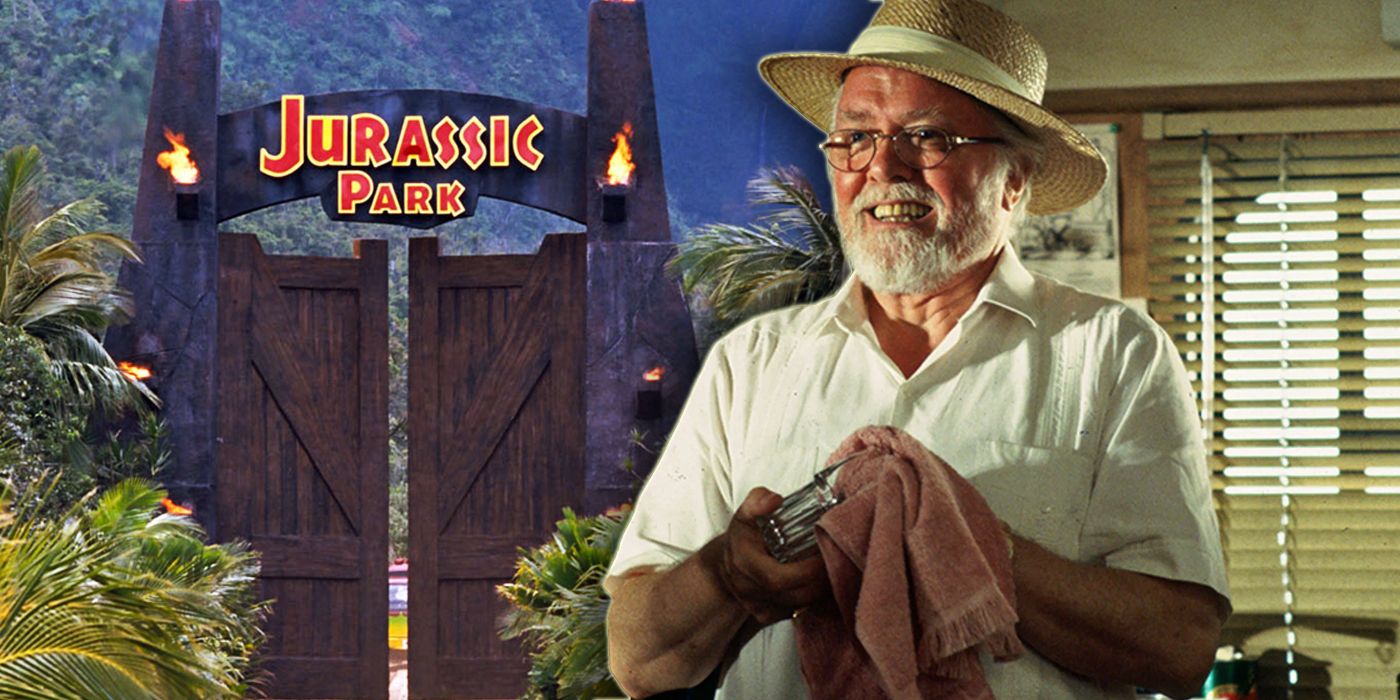
Ignoring how the film completely abandons the lessons learned about the park in the first movie. Hammond's wishes of leaving the dinosaurs alone in
the second film. And that the film is going to reteach the same lesson about tampering with nature as we've seen in the first two films, the set-up is excellent. Part of the wonder of "Jurassic Park" is the imagination of how the concept of a dinosaur amusement park would function. We saw and heard about some attractions, but the film made it clear that there is more than meets the eye since the park is still in development. It felt like taking a stroll through the "imagineering department" and "Disneyland" under construction before opening with Walt Disney as a guide. We have an idea, but we're excited to see and learn more based on the previews and John Hammond's enthusiasm. I was hyped yet fearful that the film was going to shatter that part of the imagination from the first film, only to be surprised by how well the film magnificently executes the idea.

If "Jurassic Park" reflects "Disneyland" in the making, then "Jurassic World" resembles "Disney World" functioning as a theme park, zoo, and resort, with a little bit of "Sea World." Before the film reveals the attractions, to build-up to the wonders of the park, it shows audiences around the resort part of the Island to an updated version of Visitor's Center filled with high tech computers and holograms. The attractions themselves are as enchanting as any person who loves Dinosaurs would imagine, where kids can feed, pet, and ride on some of the dinosaurs like ponies. Spectacular shows (one mainly mimicking the Shamu show at "Sea World") and exhibits showing dangerous dinosaurs eating and doing cool tricks act as the park's source of entertainment. And of course, there are numerous rides to give guests a thrill while interacting with dinosaurs, including a tour inside a sphere (that has so many safety hazards that it's outstanding that it's been operating for so long). It goes right to the detail of giving the guests special wristbands (that are similar "Disney Magic Bands"), an attraction with a sponsor, and those silly safety videos with a celebrity. It looks and feels like an actual theme park. Yet as grand as it is, there is a depressing undertone that keeps it from enchanting. Unlike how the dinosaurs in the original park had wide open landscapes to live without too much human interference, this place is consumed by corporations dominating this land. The guests themselves are always seen occupying the dinosaur's space. The park was still in development in the first film; however, from John Hammond's love for the dinosaurs, he provided them more than enough space to live in his park (becoming one of his setbacks to why the dinosaurs didn't show up on the tour). The people who run the park don't care about the dinosaurs the same way Hammond did. They just see them as profit that they want to create and aggressively control to please crowds. It's a beautifully perfect set-up for a story of playing God with nature, creating an environment that looks stunning yet lacks enchantment for having people's heart entirely in the wrong place.
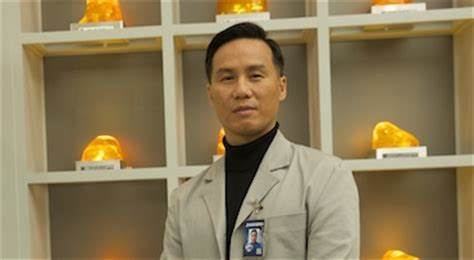
The beauty of the film's premise is it doesn't just decide to have dinosaurs run amuck in an operational theme park; it goes out of its way to create a brand new dinosaur called the Indominus Rex. I've always considered "Jurassic Park" to be a dinosaur version of "Frankenstein" for its themes on life told through Sci-Fi and horror with the dinosaurs in the place of the monster who are scary and sympathetic. This film takes the extra step of combining different types of dinosaurs into one, similar to how Dr. Frankenstein stitched different body parts together to create a man. And the reason why they chose to develop it is a clever idea. It's not just for the sake of raising profits. It's because people have become so used to dinosaurs that they no longer are interested in them and are more fascinated with technology and social media. The film doesn't clearly state how many years the park has been running, making this disinterest confusing since it doesn't feel that too much time has passed.
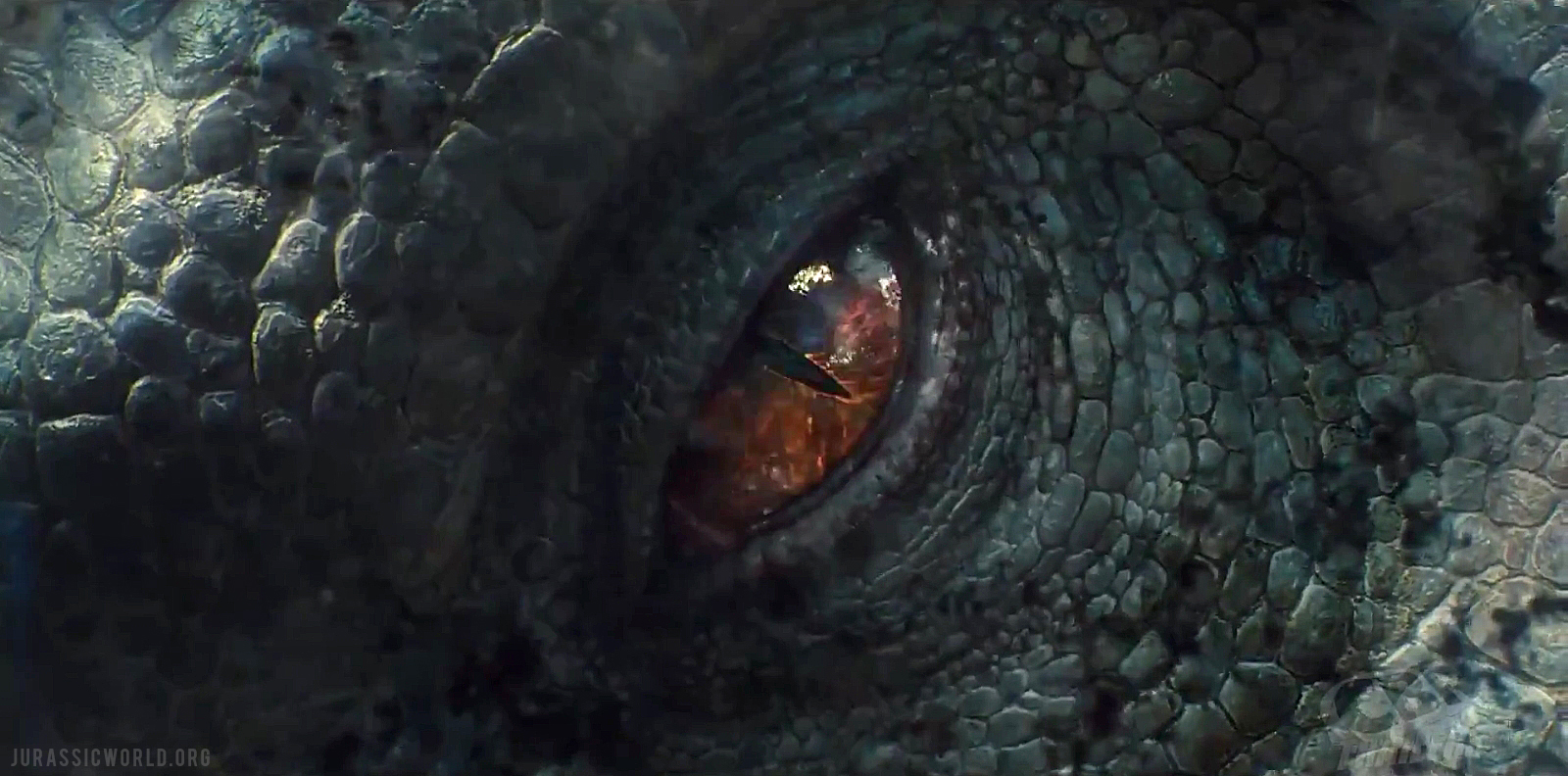
Nonetheless, it's still an ingenious idea because dinosaurs are animals, and therefore will eventually be looked at as regular animals all the time no matter how long they've been extinct. There are practically a million creative ways to combine different dinosaurs into one. Also, given that this new breed has spent its whole life in captivity away from other dinosaurs and is a mixture of different dinosaurs, this could be a story as tragic the Frankenstein monster. Imagine the dinosaur confused about who it is and where it is, angry for humans showing no mercy, and frightened of not just the human's hunting it down but also with the other dinosaurs. All these reasons give the Indominus Rex a perfect motivation to violently destroy everything in its path as its only means to deal with its emotions. The idea and its possibilities can easily be the plot for the movie for how intriguing and innovative it is.

The only tragedy related to the dinosaur in the finished film is how the film decides to waste all this potential just to have the Indominus Rex be nothing more than a monster. There are talks in the movie of how keeping the dinosaur isolated will cause it to go insane and cause mayhem, but when it does, it never feels like it's doing it out of emotion. It's destroying and eating people because that's what wild monsters do. When interacting with other dinosaurs, it kills them just for sport or quickly gets them to team up with it. Sympathy is non-existent. But hey, if it looks cool and scary, that should make up for it? The film has been building it up to be as frightening as the Velociraptors were, as well as different. No, it looks very bland and uninspiring. It seems like a gray T-rex with bumps. I'm not expecting something as over the top as a monster from a movie from the Syfy Channel, but I anticipate seeing something scary, cool, and original. And it has neither. It has a unique ability to camouflage like the Predator, which is neat, but as soon as that is revealed, it never does it again. That ability's only used as a tool for it to escape when having a faulty system controlled by workers who are lazy and overconfident is more than enough.

The effects don't do the creature many favors either. After Spielberg stopped directing the films, the special effects in the third film took the series a step backward for relying too much on CGI and having animatronics that looks suitable for a ride at "Universal Studios." The effects in "Jurassic World" only get worse by having the CGI pretty much dominate the film. Practicals have been used on the set, probably originally intending to use animatronics unaltered. Little good that did since it's clear that CGI was used over them to give them more life. To be fair, most of the scenes that choose to combine both special effects do appear to be living and breathing animals that you can touch, particularly the raptors with the squeeze cages, and the Apatosaurus. Everything else looks as phony as the dinosaurs in the last film for how animated they appear. Some may argue that the CGI in the original movie may seem dated, and while I can see their points, the dinosaurs still look like they're present most of the time. I will say this in defense to the dinosaurs in this film; they don't look as bad as the CGI for the bird, goat, and helicopter. Then again, the Pteranodons in "Jurassic Park 3" look more realistic than the pterosaurs'.

For the dinosaurs looking like they belong in a video game, naturally, that would mean the scares that the film attempts will suffer. Sure, but it's more than just the effects looking too computerized. Going back to the original classic, the scenes involving horror would take their time to build-up tension before the dinosaurs attacked as many of the scenes took place in a dark environment. "Jurassic World" has minimal patients with creating terror, as the scenes that are supposed to be slow-moving move at a rapidly fast pace to get to the action. Making things worse is that half of the scenes with the dinosaurs killing people occur during the day, making the scenes look less menacing and more like a summer B movie. The death scenes themselves go by just as quickly as the suspense that there's no time to feel the impact of it. The only death scene that looks and feels brutal is when a woman gets attacked by pterosaurs and devoured by a Mosasaurus. It's a great death scene that's dreadfully wasted on the wrong character. Some characters are deserving a fate as horrible as this, yet the film decides to take its sweet time, showing every graphic detail of a character getting munched who has a minor role.

A definite weakness that the franchise has failed to recapture from the first movie are likable characters who leave an impression. The sequels' characters were either bland, forgettable, irritating, or downright insulting (considering what the sequels did to the characters from the original). The characters in this film aren't that different either. I can't say they're as dull as the characters in "The Lost World," or as insufferable as most of the characters in "Jurassic Park 3". They're bearable at best, which I suppose is a slight improvement but not by much. The film has a few characters who are altered versions of the characters in the original. Some who have potential, like the park owner played by Irrfan Khan, who's a younger version of John Hammond, who's carefree like him except he leans more towards the business side and plans to take action when the systems are down. Others who just exist to be exactly like a character with only one significant difference, such as the nerdy comic relief (Jake Johnson) working in a control room similar to Wayne Knight's role, except he is a good guy than the antagonist. And some are just bland copies, like the kid Gray (Ty Simpkins) who's just a modern version of Tim, as he accompanied by an older brother (Nick Robinson) (instead of an older sister) who (unlike Lex) has no personality during their trip through the park.

The kids are at the park for the very same reason that Lex and Tim are. They're sent to spend time with their Aunt Claire (Bryce Dallas Howard) who helps run the park due to their parents getting a divorce. Claire herself is given a similar arc that Alan Grant had with the kids, by having her slowly build a bond with them as they adventure through the park. Nothing about Claire herself before she gets in on the adventure is anything special; she's just the typical stock workaholic guardian. Once Claire sets her high-heels out into the jungle to rescue her nephews (it's ridiculous that she wears them all this time, but isn't as distracting as people make it out to be), by the end of the film her relationship with the kids don't seem to change. The kids for the first two halves of the film have been outrunning the dinosaurs on their own, leaving no bonding time between them and their aunt where the focus should be. And after they meet-up at the end of the second half, there's still little to no time for the film to be building a connection because they're focused on stopping the new dinosaur than just getting the kids to safety. Alan Grant spent the entire second half of the film protecting and interacting with the kids. Claire spends most of her time with the Velociraptor whisperer Owen (Chris Pratt) trying to find them as the movie forces an afterthought romantic subplot between them.

I have to give the sequels credit for this because as they continued, the human villains started feeling less like villains and more like humans. As forgettable as the poachers were in "The Lost World" they still were willing to lend a helping hand to the "heroes." And the antagonist in "Jurassic Park 3" wasn't a villain in the first place, just a kid with good intentions who didn't think of the consequences of his actions. Regarding earlier about how the park is so corporate that the love for dinosaurs doesn't feel existent, seeing how most of the characters we spend time with are people running the park, this film would take the extra step by giving most of the cast antagonistic traits. Characters who are doing wrong without realizing it as they are consumed by profits only to learn their lesson when they watch the park fall. After all, they are the ones who created the Indominus Rex, therefore responsible for the problems that happened, making this more of a cautionary tale compared to any of the previous films (including the first film) for how there is no real villain this time. Blind greed and wanting to control nature is more than enough to put people's lives at stake, and it can happen to people who mean no harm.

The message is there, but the film decides to shoehorn in an obvious villain with no redeemable qualities played by Vincent D'Onofrio. No, he isn't a cold-hearted businessman who has nothing but money signs in his eyes, not to say he isn't greedy. He's the cliched military warmonger who you'd swear came out of a Saturday Morning Cartoon for how stupid his goal is. He's not the gung-ho military archetype who wants to kill the dinosaurs without preserving them or is doing something foolishly extreme that could endanger the people at the park. He's on the dinosaur's side for a different reason. He plans to weaponize the trained Raptors and sell them so they can eat the enemies on the battlefields. This plan is so ridiculous for how illogical it sounds that Chris Pratt points out how implausible it is, only making this guy's idea sound sillier than a severe threat to humanity. It's a plan that's going to backfire as soon as someone officially more idiotic than D'Onofrio's character approves it. And out of nowhere, the film makes Dr. Henry Wu (the only character from the first film making an appearance, played again by BD Wong) a twist villain, that doesn't go anywhere after the reveal. The strange part is, he already looks and acts like an obvious villain before the twist by always resembling a bond villain. It's odd to see a pleasant character who only has one scene in the first movie, now suddenly looking menacing from start to finish. What exactly is it with the "Jurassic Park" sequels changing their original characters for the worst (except for John Hammond, at least he was spared)?
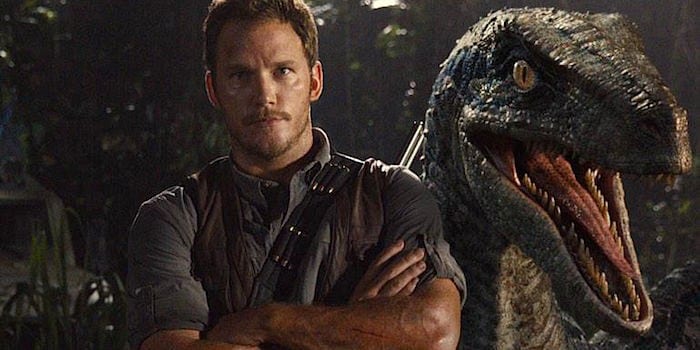
The only character in the film who's both fascinating and memorable is Chris Pratt's character Owen. Not so much his personality, more because of what he does. Going into this film, I was sure that I would be let down by this character's relationship with the Velociraptors. The Velociraptors have been through plenty of ups and downs in the franchise. They were frightening in the first film; lost everything that made them scary as they were dumbed down in the second film; and were given the silliest moment in the franchise only to regain some dignity when they took action in the third film. To now have Star-Lord from "Guardians of the Galaxy" team-up with some of the scariest dinosaurs in film history sounded as goofy as the villain's master plan. Little did I know that his relationship with them would be the best interaction in the entire movie. Just because Owen imprinted on them since they were born as he trains and feeds them doesn't mean they love him like a father. They're still wild animals that can turn on him at any moment if he or others makes a single wrong move or so much as turns his back. Their relationship is built on trust, then it is love, making the connection believable. Pratt's acting furthers the believe-ability of this relationship for how frustrated and nervous he always looks when he's around them while still trying to maintain his cool. It takes a lot of guts, patients, and discipline to train a raptor, and Pratt successfully displays all those qualifications on-screen. Forgetting how fake the raptors look most of the time, the only real downside to this relationship is that the film backfires its message of not controlling nature when in the finale, it proves that they can. And the raptors don't just randomly fight like the T-Rex did at the end of the first film, they do it for their master.

Owen is the most intriguing character in the entire franchise because there are so many things that can be explored about him compared to other characters in the franchise. To be perfectly honest about the characters in "Jurassic Park," they're boringly simplistic on paper. On-screen however, they feel like people that you'd like to sit down and have a conversation. In this film, most of the characters are disposable, yet aren't as bad as the characters in the sequels. So, what is it that the characters in the first film have that this one is lacking? One word, charisma. It's easy to tell where the arcs in the original are going to go, who's going to die, and which one is going to be the brute, the comic relief, and the villain. What saves them from coming off as bland character archetypes is through the performances that the characters give.

As over the top they can be at times, they give their characters plenty of personality than what's written. Ian Malcolm can joke around and still prove his points with his excessive nature. Alan Grant can be a buzzkill; only he doesn't feel like he has just one face the entire time until rescuing the kids. He does smile, chuckle, and look genuinely excited like a kid when he sees the dinosaurs. Nedry is an incompetent baddie we feel no sympathy for, but we love to laugh with and at him from Wayne Knight's energy and timing in his deliveries. Donald Gennaro and Mr. Arnold are undoubtedly going to be on the menu. But they still stand-out for how happily anxious Gennaro wishes to profit from the park, and Arnold's cool and laid-back personality, feeling less like dull characters who just exist to die. The characters personalities weren't just enjoyable; their chemistry felt legit. Grant and Sattler were a cute couple. The bond that Grant has with the kids was adorable without feeling forced. The reactions that people have from Malcolm when he interacts with them are funny because they seem genuinely annoyed. There are subplots in the first film that are pointless too but are often overlooked for how charming and entertaining they all are.

The acting in "Jurassic World" doesn't allow the actors to have fun with their characters. Colin Trevorrow's direction tries so hard to make these lighthearted characters serious that their reaction comes off as artificial as the dinosaurs' effects for how pretentious it is. Not to say they don't have moments where they turn in an excellent performance, such as Chris Pratt's determination to take care of the raptors, and Dr. Wu's conversation with the park's owner, they're just so rare. Everything about the performances feels unnatural. They sound way too rehearsed, and appear to all have the same blank expression. In some ways, they act like the kid working the Gyropshere who hates his job and doesn't care for how lacking they are of emotion. It's sadder when the character they act like is the only actor who has a consistently good performance out all of them for how he seems genuinely unhappy with his job and confused when things get out of control. I praised Chris Pratt, but even he has plenty of moments where he lacks emotions, including in some scenes when he's angry. There's a sense that the actors are forced to restrain their acting abilities than going all out. Simpkins, Khan, Johnson, and D'Onofrio always feel like they are held on a leash for wanting to give more personality and expression to the characters than the performances shown in the finished film. When the actors do go for big emotions when they're not trying to look serious while speaking in a nonchalant monotone voice, their performances are only sillier for how overdone they are as their eyes are covered in fake tears.

For all its faults, "Jurassic World" still contains some of the best scenes in the entire franchise. The scene involving the dying Apatosaurus is seriously the most depressing scene shown in any "Jurassic Park" film. It's a quiet scene where the visuals do all the telling rather than the dialogue, which is paced slow, contains appropriate soft music, and has the most emotion a dinosaur has ever shown for how detailed its expressions are without going overboard. The pterosaurs' causing havoc in the park offers more than how the third film handled these flying reptiles. It doesn't play out for any kind of suspense (not to say the third film handled it well), and the effects for them are still horrific, but I'd be lying if I said it wasn't an entertaining sequence when looking at it as a giant B monster movie scene. We're not seeing these creatures pray on a few humans in a jungle; we're seeing them at the park destroying buildings, picking up multiple people and killing them in many different ways. The absolute highlight of the movie is the final monster brawl with the Velociraptors and the T-Rex fighting against the Indominus Rex playing off like a climax to a Godzilla movie, filled with the perfect amount of action, excitement, tension, and destruction. It's a pity that the film doesn't contain more scenes of dinosaurs running wild in the actual park itself because those two scenes and its environment make the film a treat to watch.

Part of the fun of watching the movie is catching the many references to the first film. Usually when a sequel keeps calling back to the original, it's done out of laziness and can be quite annoying for how it obviously tries to bank on nostalgia. This film has its moments to wink at the fans of the first film, as well as having a whole scene dedicated to just pure nostalgia. For the most part, it's pretty subtle with its callbacks. In the new Visitor's Center, Mr. DNA and the hologram of the Dilophosaurus are featured clearly on-screen, but for those really paying attention to the Mise-en-scene can find a memorial statue of John Hammond and a television promo for "Jurassic Tennis" (one of the coming attractions featured in Hammond's dining room in the original). Jeff Goldblum makes an appearance as Ian Malcolm, only he appears on the cover of a book, as opposed to visiting at the park, that's a blink and miss catch. Sometimes, a reference can be right in front of a fan the whole time and wouldn't be noticed, like the color of clothing Claire and Owen wear. Some of the dialogue as well contains subtle references, whether it's Owen's comment regarding the difference between drones and dinosaurs, or a particular menu item heard on the loudspeakers.
Overall Thoughts
"Jurassic World" ironically has the appeal of visiting a theme park. There's a lot of waiting to get to the action and imagination that this film offers, but once those scenes happen, they feel worthwhile. The film is heavily flawed by having poorly written characters, performances that don't have charm, overuse of digital effects, great ideas that are wasted, and lack of scares. However, there's enough entertainment value to make it worth seeing. The park is phenomenal, the Easter eggs are everywhere, Chris Pratt's relationship with the Velociraptors is surprisingly intriguing, and some of the dinosaur action is some of the sequels best. "Jurassic World" is the best of the sequels for feeling less insulting than 3 and more entertaining than 2 combined with the scenes mentioned that make it an experience. But looking and thinking back to the previous two sequels, though my opinions haven't changed, I can still see the appeal they have in the same way people see the "Stars Wars Prequels." They're seriously flawed films that don't measure up with their predecessor. But they have a few scenes, ideas, impressive effects, and moments that shouldn't go unnoticed whether they're good movies or not and "Jurassic World" is no exception.
